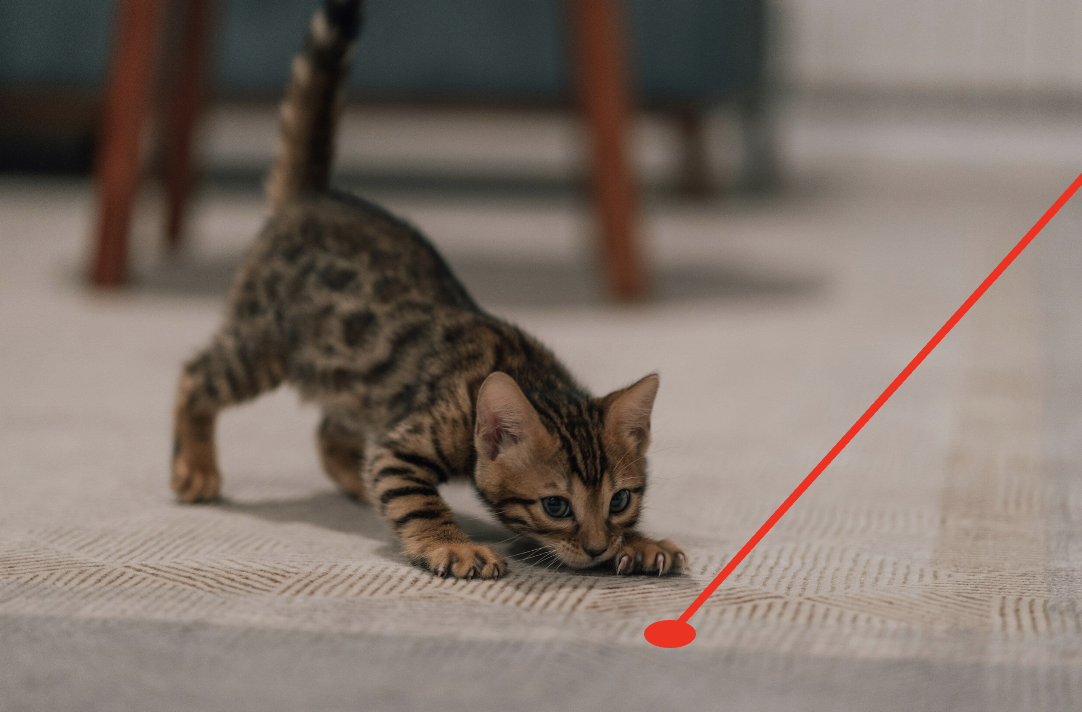Tongue and Lip Ties Part 3: Aftercare Protocols and Laser vs Scalpel
This is part 3 in our series on our family’s tongue and lip tie journey. See Part 1 and Part 2 in our previous posts.
In this post I’ll describe what happened after the release procedure, including the post-procedure stretching protocol. That’s right- even after the procedure there was still work to do. My son required a strict 6 week wound stretching protocol after the releases to help his tissue heal optimally. We will talk in more detail about that below. But first:
Some context for WHY the stretching protocol was necessary
The reason for the stretching has to do with the nature of the “release”. Not all tongue and lip tie releases are the same, and not all are complete. And there are different ways to do the procedure.
Disclaimer: The following is not medical advice. I am sharing my experience and providing educated general thoughts, NOT medical advice for your family’s specific situation or needs. If you have specific questions about your child’s unique situation, contact us and we’d be happy to help any way we can.
Frenectomy versus Frenotomy
If you hear a tongue tie release referred to as a “clip” or “snip”, it likely indicates an incomplete procedure. “Frenotomy” is also another term for this. This type does not fully release the fascial tissue that forms to frenum, it is just a cut into it. Usually this isn’t a removal of tissue. Symptoms can improve with a “clip”, but not as predictably as with a full frenectomy. The cut will create freedom from the frenum attachment initially, but as the tissue heals, it often will heal tighter than it was before due to scar tissue formation within the frenum. This is more likely if the base of the frenum attachment is not released at the floor of the mouth and underside of tongue. Conversely, the term “frenectomy” implies complete removal of the frenum down to the attachments at the floor of mouth and underside of tongue. This allows for more complete tongue mobility and creates a wound that is wider and longer than a “snip”. But in this case, we want the bigger wound!
Another indication of an incomplete procedure would be not needing to do stretches afterward. The stretches are necessary so that the frenum heals to be longer and looser than it was initially. The longer frenum allows more freedom than the initial “tongue tie”. Dr Ghaheri does a good job explaining his on his website:
“After an incomplete procedure, stretches are irrelevant because the size of the wound created is minimal, so it will heal with minimal scarring. The problem in this scenario is that the tension of the posterior tongue tie is still present and function doesn’t improve. What we want is a procedure that fully releases the tension and doesn’t reattach. This can only be achieved by actively stretching the wound.”
Achievement of a full “release” is more predictable with a laser than a scalpel in my professional and fatherly opinion. Here’s why:
Frenectomy method: Laser versus Scalpel
A controversial topic within the tongue tie space is whether the procedure should be done using a scalpel or laser. In general, I am more comfortable with a laser for several reasons. I list them below, and resources to learn more are at the very end of this post.
Pros of a laser:
CELEBRITY ENDORSEMENT!
Buzz Lightyear prefers lasers. As does the kitty cat in the photo above!
Precision: Lasers can be very precise, allowing for complete, targeted tissue removal while minimizing damage to surrounding tissue. There is much less precision with a scalpel or scissors.
Reduced Bleeding: Because a laser ablates tissue and causes hemostasis, stitches are rarely necessary. Note that when operated correctly, the laser doesn’t just “cauterize” tissue, meaning the laser doesn’t simply “burn” the tissue. This distinction can confuse even medical professionals. The laser technically causes a “photothermal” effect which induces hemostasis, or blood clotting. I wont explain that mechanism here. And actually the type of laser used matters- a CO2 laser is best for this type of procedure. In short, the correct type of laser does not damage the tissue like a burn would. Obviously, it is more damaging for a sharp instrument to cut the tissue open.
Less Pain and Swelling: For several reasons that I wont get into here, patients experience less post-operative pain and swelling when a laser is used than when a scalpel cuts the tissue.
Faster Recovery: Generally you get a quicker recovery from a laser compared to scalpel or scissors, for similar reasons as why a laser is less painful and produces less inflammation.
Cons of a laser
Relative expense: The laser procedure may be more expensive than one done with scissors or a scalpel.
Knowing all this, our path was clear: Laser frenectomy, then follow a stretching protocol to maximize healing
Post procedure protocol
10 minutes after the laser release was finished on my son, we started his wound stretching protocol. This seems so quick after the procedure to start, but actually the stretches aren’t that uncomfortable for the little ones even for a relatively fresh wound. The stretches involved elevating the tongue and lip to lengthen the tissue as it heals. We were to do these stretches every 4 hours for 6 weeks! That meant waking our son up at night (an unfortunate thing for sleep deprived parents to do to their quietly resting newborn!). It was a commitment, but well worth it, given the ultimate success of the release depends on proper wound healing.
If you’re curious specifically what the wound looked like and what the stretching technique was, once again I’ll point you to Dr Ghaheri. (Can you tell I’m a fan of this guy?) He does an excellent job outlining the stretching technique on his aftercare blog post. The exercises are absolutely imperative for proper healing. The biggest question most parents have about the stretching protocol is:
Are the stretches painful?
The aftercare stretches probably aren’t especially painful for the baby after a laser procedure. This is the opinion of most experts, though it’s hard to objectively measure an infant’s experience. Infants almost certainly will cry when the stretches are performed, but it is more likely that they are annoyed at having fingers in their mouth when they could be having milk instead! Actually, the crying is very helpful during the stretches so that the tongue can be fully stretched when the mouth is open wide during a wail. Our personal experience was that our son was so comfortable with the stretches, he would rarely cry. He would normally just coo at us and try to chew our fingers. This actually made the stretches much harder! Though that is not every parent’s experience. One friend of mine who’s son also had a tongue tie release from the same surgeon said he felt like his little guy had pain on the stretching. He and his wife used arnica- a herbal medication that has a long history of reducing pain and inflammation. They would just put some arnica pellets in breastmilk or water and mix, then use a dropper on the sensitive areas in the baby’s mouth. It seemed to help. Unsurprisingly, everyone’s experience is a little different.
Myofunctional therapist help
Most surgeons strongly advise or even require you to see a lactation consultant or myofunctional therapist after the release. We were on board with this. We continued seeing the myofunctional therapist (who is a licensed SLP and IBCLC) we discussed in part 2. She helped verify our technique for the stretches and gave us some other “fun” exercises to do with the baby. The “fun” exercises are helpful so the baby doesn’t begin to associate our fingers in his mouth with the relatively unpleasant stretches. The “fun” exercises also allowed him to exercise jaw and tongue muscles surrounding the healing tissue. They were easy and promote optimal function and latch. Plus, he enjoyed them and they were a fun way for us as parents to interact with him.
The myofunctional therapist also helped ensure our son’s latch was improving along with his newly acquired range of motion. Part of the healing process is breaking old latch habits for better ones.
Sidenote: Our office also works with myofunctional therapists during airway orthodontics. Usually we do this with kids in the 3-12 age range. For more info, check out our Airway Orthodontics page.
Was it worth it?
I’ll be honest- the stretching commitment was difficult for us all. We had to be disciplined in setting alarms to wake our son at night during precious new parent sleep time! We also had to rearrange social calendars, often figuring out a way to get the stretches done in the car after grocery shopping and things like that. It was annoying! And 6 weeks of stretches felt like a long time for us as parents.
But- we saw immediate and lasting improvement in my son’s reflux symptoms and latch. This far outweighed the frustrations of the stretch. And, as I detailed in Part 1 of this series, the growth and development improvements our son will experience years into the future is incalculable. The procedure changed his life!
As a dentist I understand the benefit of tongue tie release.
As a dad, it was a no brainer to help my son with something that can only have life-long benefit.
I’d do anything for that kid. I’m sure if you’re a parent, you feel the same about yours.
I’m hopeful this series helps you in your journey. Please reach out with any questions.
Dr Brayden Teuscher
Laser versus Scalpel resources:
Convissar, RA. "Laser applications in oral surgery and implant dentistry." Journal of Oral Laser Applications, vol. 15, no. 3, 2015, pp. 123-136. DOI: 10.1234/jola.2015.15.3.12
Doméjean, S., et al. "Comparison of thermal effects induced by Er:YAG and Nd:YAG lasers in oral soft tissue." Lasers in Medical Science, vol. 24, no. 3, 2009, pp. 385-391. DOI: 10.1007/s10103-008-0603-7
de Freitas, PM., et al. "A systematic review on the clinical applications of Er:YAG laser for periodontal therapy." Journal of Periodontology, vol. 86, no. 11, 2015, pp. 123-135. DOI: 10.1902/jop.2015.140592



